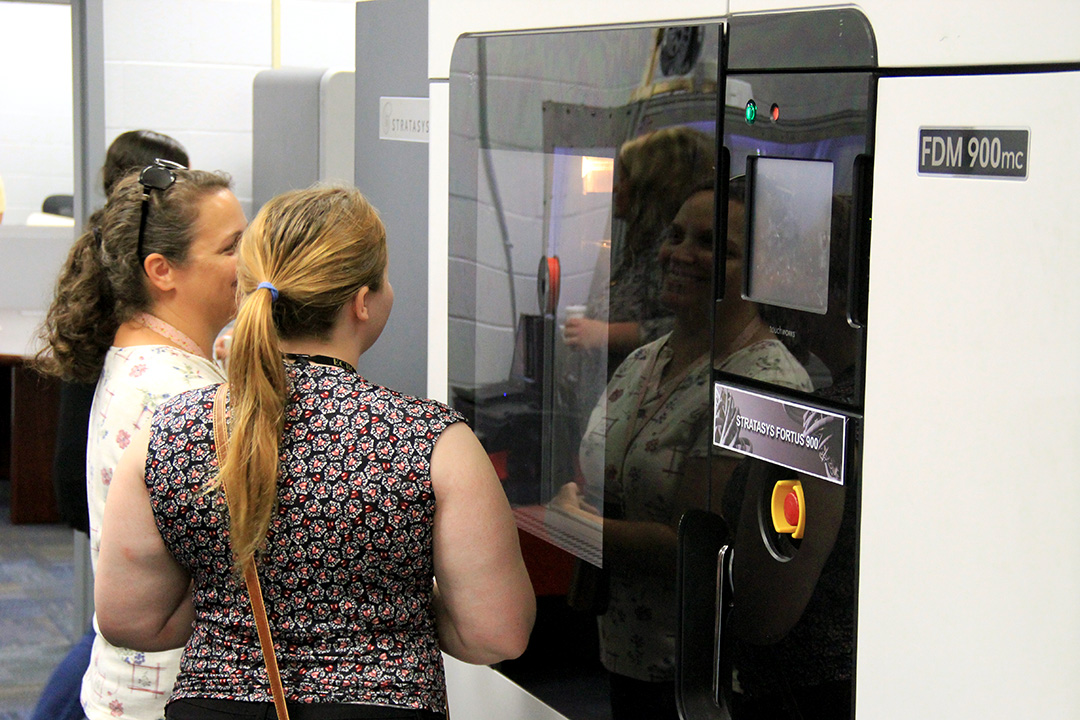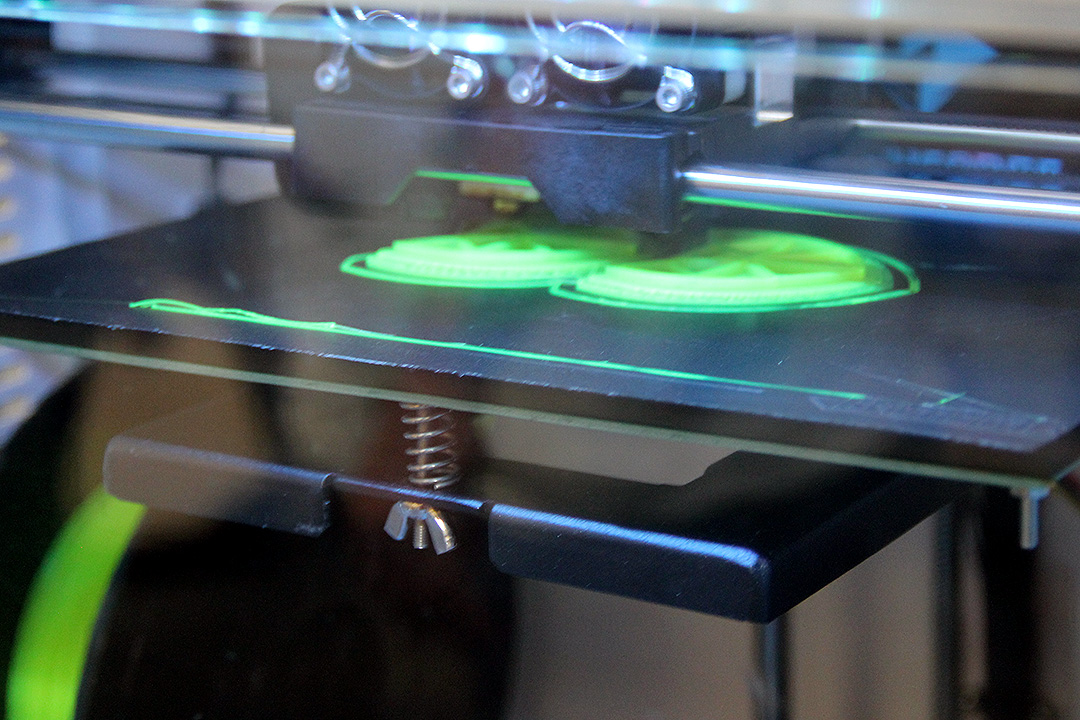// NEWS RELEASE
ECBC’s MakerSpace Aims to Make 3D Printing Available to More Chemical Biological Researchers
MakerSpace is an ECBC workshop of state-of-the-art 3D printers that will be available to any Center researchers to use for making mission-related product prototypes.
CCDC Chemical Biological Center Public Affairs | August 9th, 2016
ECBC’s MakerSpace Aims to Make 3D Printing Available to More Chemical Biological Researchers
MakerSpace is an ECBC workshop of state-of-the-art 3D printers that will be available to any Center researchers to use for making mission-related product prototypes.
DEVCOM CBC Public AffairsAugust 9th, 2016

Edgewood Chemical Biological Center (ECBC) employees inspect the state-of-the-art equipment available for use by ECBC personnel at the MakerSpace open house held on July 20.
Dozens of science and engineering researchers from across the Edgewood Chemical Biological Center (ECBC) attended an Open House at the CBRNE Product Development Facility on Aberdeen Proving Ground on July 20 to learn about MakerSpace. MakerSpace is an ECBC workshop of state-of-the-art 3D printers that will be available to any ECBC employee to use for making mission-related product prototypes and specialty items without charge from now until September 30, 2016.
The MakerSpace workshop offers users seven different types of 3D printers and one laser cutter, plus the guidance of ECBC’s team of 3D printing experts. MakerSpace participants will begin by taking a one-hour safety course followed by one-on-one instruction on how to use the 3D printer that is best suited for the item to be printed.
The attendees were impressed. “One could definitely use this capability for anything in the lab requiring a custom fit, especially when commercial off-the-shelf supplies won’t do,” said Kelley Betts, a Biotechnology branch scientist in ECBC’s Biosciences Division. “It would be especially good for producing custom sampling consumables that might need to be disposed of after use due to contamination.”
STEM students can benefit from 3D printing, too. “I’ve never seen technology like this before,” said Kelsey Person, an ECBC summer intern and student at Baltimore’s Eastern Technical High School. “I want to be an engineer, and I can see using 3D printing to make prototypes of my ideas.”
This technology has already proven itself to Joe Domanico, an ECBC Chemical Engineer. “I designed a new kind of smoke grenade shaped like a whiffle ball, hollow with lots of perforations on the surface so that it would release smoke without fragmenting. It had to be made in one piece to keep it from splitting upon ignition of the smoke material. No commercial manufacturer could do this, so I turned to ECBC’s 3D printing and they made me exactly what I needed.”
Including 3D printing in a project offers other advantages. “Using MakerSpace can accelerate a project schedule and maximize its budget by allowing users to print prototype ideas without committing to formal outside prototype production,” said Brad Ruprecht, an engineering technician and model maker who has been working with additive manufacturing and 3D printing for 13 years. “In the process, the product developer gets much more deeply engaged in the product because he or she is making the variations to the design directly, seeing exactly how even the smallest design changes help or hurt its function.”

A variety of desktop fused deposition modeling (FDM) machines are available, including the MakerBot, uPrint, and FlashForge FDM machines. FDM machines can print with thermoplastic materials such as acrylonitrile butadiene styrene (ABS), polycarbonate (PC), and nylon. thermoplastic materials such as acrylonitrile butadiene styrene (ABS), polycarbonate (PC), and nylon.
Guidance from 3D printing experts is a big part of what MakerSpace offers. “We will listen to what the researcher or designer wants to do, point them to the right machine and provide any further instruction or guidance they might need,” said Sabrina Rawlings Seiple, a chemical engineer on the 3D printing team. “Ultimately, we want to give people the freedom to innovate and invent as they learn the full capabilities and limitations of the printer they select.”
“For example the Fused Deposition Modeling Printer uses thermo-plastic, like the material legos are made of, and is especially good for printing something that needs to be strong and will be exposed to high temperature such as the custom bracket,” said Ruprecht “The Stereolithography machine uses an acrylic-based resin and prints items that are close to plastic but more brittle. It is especially good for printing small, intricate parts. There is also a laser cutter than can cut out precise shapes from sheets of plywood, rubber or plastic. It will also etch metal.”
MakerSpace is being championed from the highest level of the organization. “This is a terrific initiative for the Center,” said ECBC Director, Joseph Corriveau, Ph.D. “The collaboration between researchers from across the Center will encourage new synergies and stimulate a lot of creative thinking.”
The team foresees a time in the future when MakerSpace will have contributed to every important product design across the Center by allowing additive manufacturing technology to be a new tool in everyone’s toolbox.
The U.S. Army Combat Capabilities Development Command (DEVCOM) leads in the discovery, development and delivery of technology-based capabilities to enable Soldiers to win our nation’s wars and come home safely. DEVCOM is a major subordinate command of the U.S. Army Futures Command. The DEVCOM Chemical Biological Center is the Army’s principal research and development center for chemical and biological defense technology, engineering and field operations. The DEVCOM Chemical Biological Center is headquartered at Aberdeen Proving Ground, Maryland.
